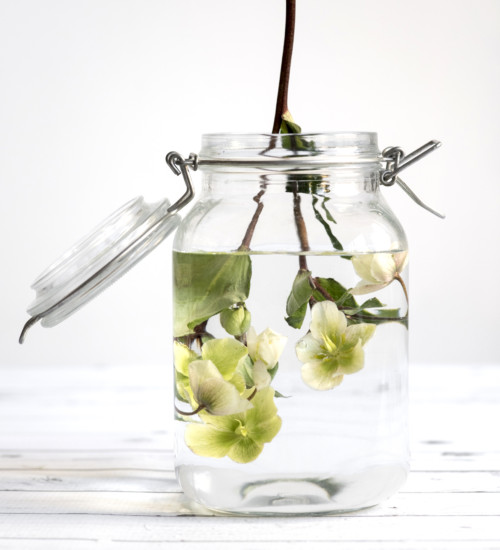
Ask Ella: Chill Your Hellebores
Ask Ella is a recurring Garden Collage feature where we ask our in-house florist, Ella Stavonsky, about floral design– including the history of, origin, and maintenance that goes into some of the most intriguing flowers on the market today. This column is dedicated exclusively to common and rare varieties of flowers you’re likely to find at your local market. This week, we spotlight hellebores, one of Spring’s most ephemeral flowers.
According to Staff Writer Nora Rose Mueller, hellebores are the greatest flowers Spring has to offer and no, nothing else even comes close. Personal favoritism aside, hellebores are one of the more striking flowers that start emerge with the end of winter: their rich green leaves, cream-colored petals, and red-brown stems are together one of the most exquisitely beautiful palettes nature has to offer. Hellebores exude a kind of ethereal, woodland allure, their heads hanging down slightly, as if shy. A part of the Ranunculaceae family (to which clematis also belongs), “hellebore” is a catch-all phrase that refers to about twenty species, many of which are frost-resistant and evergreen.
Unfortunately, for all their beauty and strength through winter, hellebores are a fragile group when cut for bouquets, and within a few hours often start to droop, their heads hanging perilously close to the surface they’re sitting on. When this starts to happen, Ella recommends getting them into to cold water as quickly as possible and submerging them completely, petal to stem (and no, we’re not joking this time). Leave them in water for ten to fifteen minutes, and then place them in an extra cool part of the refrigerator, in a glass with plenty of cold water. Ideally, hellebores will sit in there until needed again, but it’s best to at least give them an hour’s rest in the cold and dark. Keep the bouquet in as cool as spot as possible, as the heat works away at hellebores very quickly.
In bouquets, hellebores are a breeze to use, pairing well with other sylvan plants like ferns, or with country-side florals like white cottage roses or tuberose. But because it has a mix of thick greens and softly-colored petals, hellebores will mix in well with green-heavy bouquets and flower-heavy bouquets alike.


































